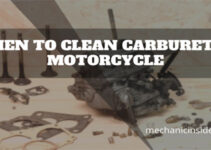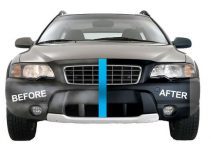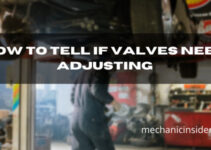You might think cleaning your home exterior or vehicles is a time-consuming and pretty complicated process. It is not the case if you learn to use a power washer, also known as a pressure washer. When it comes to cleaning jobs like this, they are great tools to accomplish your tasks. These washers can remove all the dirt and grim in a much quicker and effective way. But sometimes high pressure could damage your property.
How to Use a Power Washer
If you are a beginner, then follow this article to the bottom line. A proper guideline will make your task effective and safe. Are you looking for an efficient way of cleaning but confused? You can use a power washer for the job. Learn more about how to use a power washer in this article.
Power Washer
Mainly, they are powerful tools that use high pressure (like 1000 to 3000 psi) to remove surface dirt. An electric motor or gas engine is used to create this kind of pressure. Your garden hose should be connected to the power washer for continuous water supply. Sometimes extra cleaning agents like detergents are also used in washing. High pressure from the washer can get access to the narrowest part of any surface. It can also remove the toughest grime from your house, vehicles, boards, etcetera.
Categories
There are two types of power washer out there. Though both work at the same principle, but there some differences in their applications. Let us have a quick look at them:
Gas Powered Washer
This type of washers uses 2000 to 2800 psi (pounds per square inch) which is very high. That is why they can handle heavy-duty jobs like farm cleaning or paint removal.
Electric Washer
They use low power compare to gas washers like 1300 to 1500 psi. This type of machine is famous for pressure washing a car, grills, etcetera. You can also use an electric washer if you are looking for a home exterior cleaner.
Washing Procedure
steps |
|---|
1.Wash out the inner filter and loosen grim of the surface. |
2.Check the capability of the hose to collaborate GPM with the machine. |
3.Re-check the garden hose about clogs. |
4.Beware of kickbacks while starting the machine. |
5.Keep the washer pressure low at the starting point. |
6.Notice if the engine gets overheated or not. |
7.Do not stick to one place on the surface and use proper flexible nozzles. |
8.At least keep 6 inches distance from the surface. |
As discussed earlier, both washers can do similar operations. But it would be best if you read the user manual before starting. Let us show you the basic steps of pressure washing:
Step-1
First, you have to wash all the loose dirt with a brush or sweep them with a piece of cloth. Check the inner filter is clean or not. That is because water flow can be disturbed if the filter is not clean.
Step-2
Make sure a proper connection with the garden hose to the inlet tank. You can calculate the time of how long it takes to fill a 4-gallon bucket with your garden hose. This is because it needs to supply proper GPM (gallons per minute) for the machine. If it fails to do that, the process will stop midway or hampers the motor.
Step-3
Another thing is you should notice if your pressure hose is free of clogs and kinks.
Step-3
There is a detergent reservoir in this washing machine. If you want to use any detergent solution, fill it with the proper mixture.
Step-4
Now it is time to start the engine or motor. If you are using a gas washer, remember to adjust the choke and throttle. It gives a high-pressure kickback. Hence, use your foot to handle that and keep the machine steady. If you are using an electric washer, remember to plug the switch while it is grounded.
Step-5
After completing the above steps, you are prepared to power wash. But keep the pressure low at first to avoid kickbacks. Always check the hose connections if there are any leaks.
Step-6
Wait the first minute of the flow to prime the system but not too long. But you should avoid letting the machine idle for more than 2-3 minutes, or else it will overheat. This could damage the motor.
Step-7
Now you can start to increase the pressure according to the dirt surface and create a side-to-side motion of the nozzle. Hold the wand tight with both hands if you do not want to slip it to the ground. The most important fact is that do not stand in a fixed place or else the surface can get damaged. Therefore, you should always spray the water in a moving position.
Step-8
You might think if you get close to the surface, water will spray with more speed. But getting too close will also damage your property. Keep the distance about six inches away from the surface even with low pressure. You can adjust the pressure tips or lock the trigger at a fixed pressure.
Nozzles are important!
Yes, they are. They are the most essential accessory of cleaning tasks. You can adjust the spray patterns (varies from zero to sixty degrees) according to your power washing. Often they come with different colors to specify their functions. The degree decides the spreading area of water or cleaning agents on the surface. Here are the color-coded nozzles:
Zero Degree (Red)
It is used for the most onerous grime or debris. This type of dirt is often found on concrete or metal surface. But you cannot use them in housing siding or woods. That is why they are the least usable ones among all types.
15 Degree (Yellow)
If you want to remove dirt, paint, or mildew, you can use this nozzle type. It helps you to wash tough grim from a safe distance.
25 Degree (Green)
Mainly, they are very common for washing your house exterior, cars, boats, furniture, etcetera. Even if you are confused about nozzles, you can use green nozzles at the beginning.
40 Degree (White)
They are used in low-pressure machines, which are gentler to washing surfaces like windows or flower pots.
Black
If you want to use soap in a pressure washer, then these nozzles are the best choice for you.
Rotary or Turbo
This type of nozzles is a kind of hybrid. They can handle the pressure of a zero-degree nozzle but gives the spread area of a 25-degree nozzle. You can use this type of nozzle with various surfaces.
Electric vs. Gas-Powered
Though they are similar, there are some advantages and disadvantages between them. Let us discuss them so you can choose which one to use.
Advantages of Electric Washer
This type of washer does not produce harmful emissions like others. As an electric engine powers it, you do not have to worry about regular maintenance. This is also applicable for fuel changes. You can work with these longer time than gas-powered.
Disadvantages of Electric Washer
Electric engines cannot produce power like gas motors. Thus you cannot use them in tricky areas. Even if you use it, it will take more time than usual to clean the surface. One of the main problems is they are not battery-powered. You would need an external source to power-up the machine. That is why portability is a problem for electric washers.
Advantages of Gas-Powered Washer
They have a more extensive range of psi and GPM levels compare to electric washers. As mentioned, gas washer pressure is up to 2800 psi. It is suitable for heavy-duty cleaning. For higher pressure, they can complete the job more efficiently and quicker than an electric washer. Another significant advantage is portability. This type of washers does not need any power outlet, and they are cordless. Their power source is gasoline-based motors.
Disadvantages of Gas-Powered Washer
As we know, they are gasoline engines. Therefore, without consistent maintenance engine will not able to work properly. Using gasoline can cause problems sometimes if you do not use proper fuel additives. Else the machine will lose its longevity. They also make loud noises than electric engines. Mainly, gasoline burns to produce this kind of power. Thus burning with oxygen produces several emissions which are not environment friendly.
Power Washer on a Car!!
Many people do not recommend using a power wash on their car. But it is not that kind of extreme rule. You will see many professionals using power washers for cleaning their cars. The truth is you have to follow some guidelines if you want to use them on a car.
The pressure for cleaning a car should be around 1500 psi. If you use more than that, you might damage your car paint and waxing. The most important thing is a suitable nozzle. Do not ever use a zero-degree nozzle. It can concentrate an incredible amount of force on the spreading area. Therefore, if you use this, the pressure would hamper the car’s coatings or peel some layers. It would be wise to use some wider attachments like green (25 degrees) and white (40 degrees) ones.
If you use car washer pressure over 2000 psi, then you should use rotary nozzles. It will reduce the possibility of damage to the coating. Because swapping into various angles is its specialty. That is why an electric washer with an appropriate nozzle is the best option for cars.
Power Washer on a House!
It is very common to use a power washer in your house, wood decks, sidings, metal surfaces, etcetera. There are some differences in cleaning each side of your home.
Large Deck or Wooden Fence
You can use detergents on wooden surfaces because cleaning agents work better on these surfaces. You can use a high-pressure nozzle like yellow (15 degrees) or green (25 degrees). Do not stop at one place on the surface. You can overlap any surface many times. What about the distance? Well, you should maintain a 1 to 2 feet distance from the wood surface and hold the wand at a 45-degree angle.
Do not start cleaning in direct sunlight and let it dry about two days after washing.
Siding
The main trick is that you should start with smaller sections. But do not use detergents at the bottom. You can use a green and white nozzle for this job. Again, do not spray straight; rather than use a downward angle. About the distance, maintain 10 inches away from the surface while holding the wand. Another important thing is to avoid electrical circuits’ around the house. An electric washer would be perfect for it.
Power Washer on a Concrete Surface
There are some great power washers in the market right now. Which one will you use for a concrete surface?
You have to use a gas-powered washer if you want an efficient result. At first, brush the edges and greater muddy area before starting. A powerful nozzle (15 degrees) is essential because grim are tougher here. Sometimes normal water cannot do enough cleaning. Then you can use some detergents for further washing. After you are done with that, let the surface dry and apply a concrete sealer to the edges.
Precautions
While working with a power washer, you have to maintain some caution to avoid unfortunate events.
- Wear safety goggles
- Do not get your hands in front of the nozzle
- Never point it to other people
- Do not work from a ladder
- Maintain minimum distance from the surface
- Do not plug extension cords
- Remember to engage the safety lock on the trigger
Bottom Line
We hope you get the idea of how to use a power washer. Follow these guidelines to take good care of your home and vehicles.



